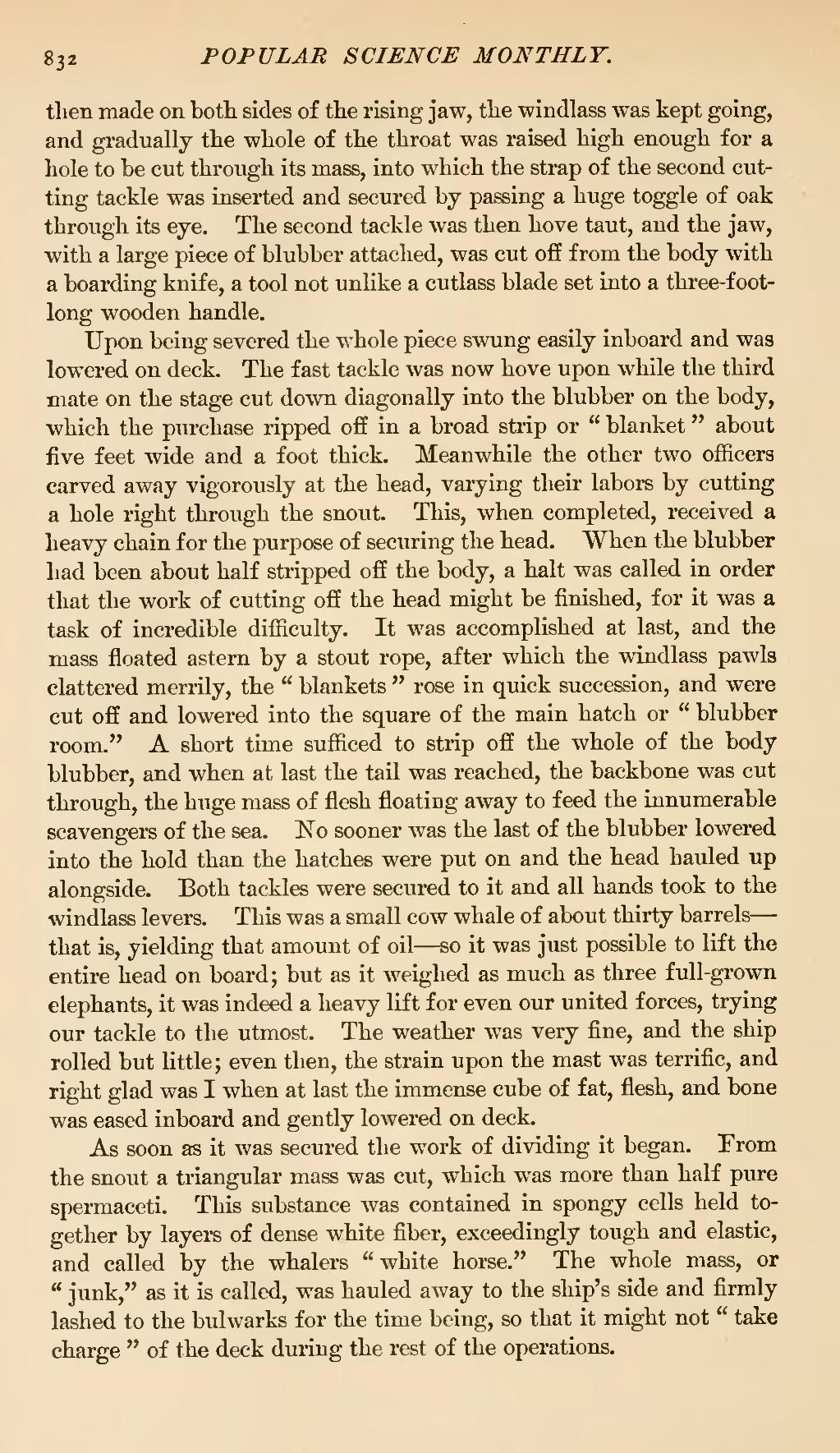then made on both sides of the rising jaw, the windlass was kept going, and gradually the whole of the throat was raised high enough for a hole to be cut through its mass, into which the strap of the second cutting tackle was inserted and secured by passing a huge toggle of oak through its eye. The second tackle was then hove taut, and the jaw, with a large piece of blubber attached, was cut off from the body with a boarding knife, a tool not unlike a cutlass blade set into a three-footlong wooden handle.
Upon being severed the whole piece swung easily inboard and was lowered on deck. The fast tackle was now hove upon while the third mate on the stage cut down diagonally into the blubber on the body, which the purchase ripped off in a broad strip or "blanket" about five feet wide and a foot thick. Meanwhile the other two officers carved away vigorously at the head, varying their labors by cutting a hole right through the snout. This, when completed, received a heavy chain for the purpose of securing the head. When the blubber had been about half stripped off the body, a halt was called in order that the work of cutting off the head might be finished, for it was a task of incredible difficulty. It was accomplished at last, and the mass floated astern by a stout rope, after which the windlass pawls clattered merrily, the "blankets" rose in quick succession, and were cut off and lowered into the square of the main hatch or "blubber room." A short time sufficed to strip off the whole of the body blubber, and when at last the tail was reached, the backbone was cut through, the huge mass of flesh floating away to feed the innumerable scavengers of the sea. ]STo sooner was the last of the blubber lowered into the hold than the hatches were put on and the head hauled up alongside. Both tackles were secured to it and all hands took to the windlass levers. This was a small cow whale of about thirty barrels—that is, yielding that amount of oil—so it was just possible to lift the entire head on board; but as it weighed as much as three full-grown elephants, it was indeed a heavy lift for even our united forces, trying our tackle to the utmost. The weather was very fine, and the ship rolled but little; even then, the strain upon the mast was terrific, and right glad was I when at last the immense cube of fat, flesh, and bone was eased inboard and gently lowered on deck.
As soon as it was secured the work of dividing it began. From the snout a triangular mass was cut, which was more than half pure spermaceti. This substance was contained in spongy cells held together by layers of dense white fiber, exceedingly tough and elastic, and called by the whalers "white horse." The whole mass, or "junk," as it is called, was hauled away to the ship's side and firmly lashed to the bulwarks for the time being, so that it might not "take charge" of the deck during the rest of the operations.
